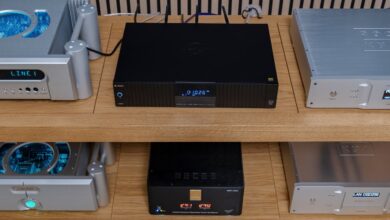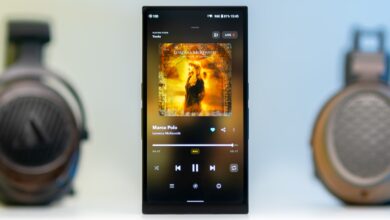Monitor Audio Platinum 200 3G – Sparkling Magic in Your Life

Introduction
We could have opened with the usual audiophile cliché about a speaker that strolls in and instantly resets the price-point bar….but let’s not do that. Monitor Audio Platinum 200, the 3G generation, launched on the occasion of the brand’s 50th anniversary impressed us with speed, subtlety, and a top end of rare finesse, however, it also carried clear limitations, most notably in impact and low-end reach, and, if the pairing is not quite right, with electronics and cables, of course, its midrange may sound a little thin. You can understand now why our admiration came with reservations. Some drawbacks have been resolved through careful and attentive matching, so we have a special section dedicated just to this.
This is not a speaker that seeks to suit everyone’s needs. It is sensitive to placement, fussy about setup, and has little tolerance for half-measures in system matching. But for those willing to put in the time and effort, the reward is an addictive sense of micro-dynamics and treble refinement that leaves a long-lasting mark. There is a sense of finesse and delicacy to them that you rarely find at any price point!
We spent the better part of a month living with these speakers, rotating through a reference lineup of electronics: the brutally honest Chord Ultima Integrated, the musically rich Aesthetix Mimas, and the masterful Class A Burson Timekeeper Voyager. We also used two totally different DACs: from the lush, organic-sounding Gustard, their newly released R30, and from Topping, their top-of-the-line D900 that proved to be very analytical and at times a bit dry. For the source, we switched from streaming using an Eversolo T8 and an excellent CD / SACD transport from Onix, the XST20. Each amp revealed a different facet of the Platinum 200’s personality, from absolute resolution to lush tonal color, and all exposed the same core truth: the star of the show was the tweeter, and everything else seemed built around its strengths.
But before falling down the rabbit hole of subjective impressions, it is important to know that we all listen differently, have unique musical tastes, use different electronics, and occupy distinct listening environments. You can gain an objective sense of a speaker’s performance from the measurements section, but remember, those measurements are also taken in our specific room. We will write about our journey with these speakers, how they sounded to us in our space, describe the experience, and share how we connected with them, but that is it. The only way to truly know is to hear them yourself. If you like what you read, then book an appointment with your local dealer and give them a try.
Let’s begin now by setting the scene.
I. Build Quality & Technical Overview
Monitor Audio’s Platinum series has always stood apart in terms of fit and finish, and the 3G iteration is no exception. The cabinet work proves to be excellent: thick, inert, and beautifully finished, with a level of attention to surface treatment that awes in first impressions.
Enclosure
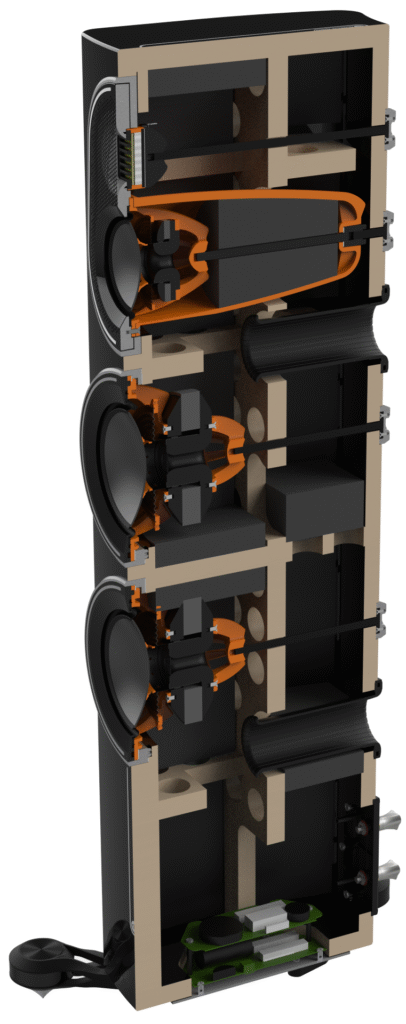
Monitor Audio states the cabinets are constructed using laminated layers of MDF to form a curved, braced, super-rigid cabinet with 18–21 mm wall thickness and a 36 mm thick front baffle.
Even though the cabinets are constructed in China, as far as we know, made by Tifanny Audio, the inert feeling and flawless fit/finish are genuinely high-end and a pleasure to look at. In the short video, you can see the inner bracings, and they look impressively well-built.
As seen in the sectioned cutaway view of the speaker, the cabinet is heavily reinforced internally with a combination of horizontal and vertical supports, ensuring rigidity and minimizing unwanted resonances. The walls themselves appear to be multi-layered, a construction technique that further improves stiffness while controlling vibration transmission.
Notice the solid bracing between the drivers, which not only strengthens the cabinet but also isolates mechanical energy from each driver, reducing coloration and improving clarity. The midrange driver has its own dedicated enclosure, featuring visible damping material at the rear. This material serves a similar purpose to the tapered tube designs used by Vivid Audio or the metamaterial-based damping employed by KEF: it controls standing waves, absorbs unwanted reflections, and smooths the frequency response within the midrange, resulting in a more precise and detailed sound.
At the bottom of the cabinet, the crossover assembly is mounted on the plinth, which is isolated from the wooden enclosure. This design choice decouples the electronics from vibrations generated by the drivers, ensuring that the crossover components operate in a mechanically quiet environment, contributing to overall sonic purity and consistency.
Crossovers utilize elliptical filters to minimize the effects of driver breakup, reducing SPL ripple and THD.
Tweeter crossover section utilizes a parallel notch to control ultra-high frequency resonances, as stated by official documents.
Due to the curvatures, the enclosure has a unique front and rear profile. The cabinet is embellished with etched inlays to highlight the craftsmanship, after which 16 layers of lacquer are applied to create a beautiful, luxurious piano-gloss finish. It is indeed a high-quality lacquer; when dusting it with the microfiber included, we did not notice the creation of any microscratches.
The new Platinum outrigger foot assemblies have been precision-engineered to form a solid platform for the floor-standing speakers while presenting more elegant aesthetics compared to a cumbersome plinth.
Each of the four-foot assemblies features ten parts, developed just for this range.
There is no leaning or lifting required to access the spikes underneath to adjust the height.

Another very cool feature, one that really speaks to the attention to detail, is the improved strength in the feet themselves, allowing the walkability of the speaker in the desired position without fear of bending them.
MPD III tweeter
The new MPD III high-frequency transducer is the same one developed specially for the 50th anniversary Hyphn loudspeaker.
Improvements reduce distortion and flatten frequency response for a clear, consistent sound across all music. The Micro Pleated Diaphragm (MPD) extends the tweeter’s passband above 60 kHz (compared to 40 kHz for a typical AMT).
The square radiating area gives equal directivity in both horizontal and vertical planes, improving the soundstage. The rear volume is optimized to ensure minimal ripple in the audible range, with a gentle on-axis rise for detail.
The waveguide is optimized to control directivity and match radiation impedance, further improving soundstage and maximizing sensitivity.
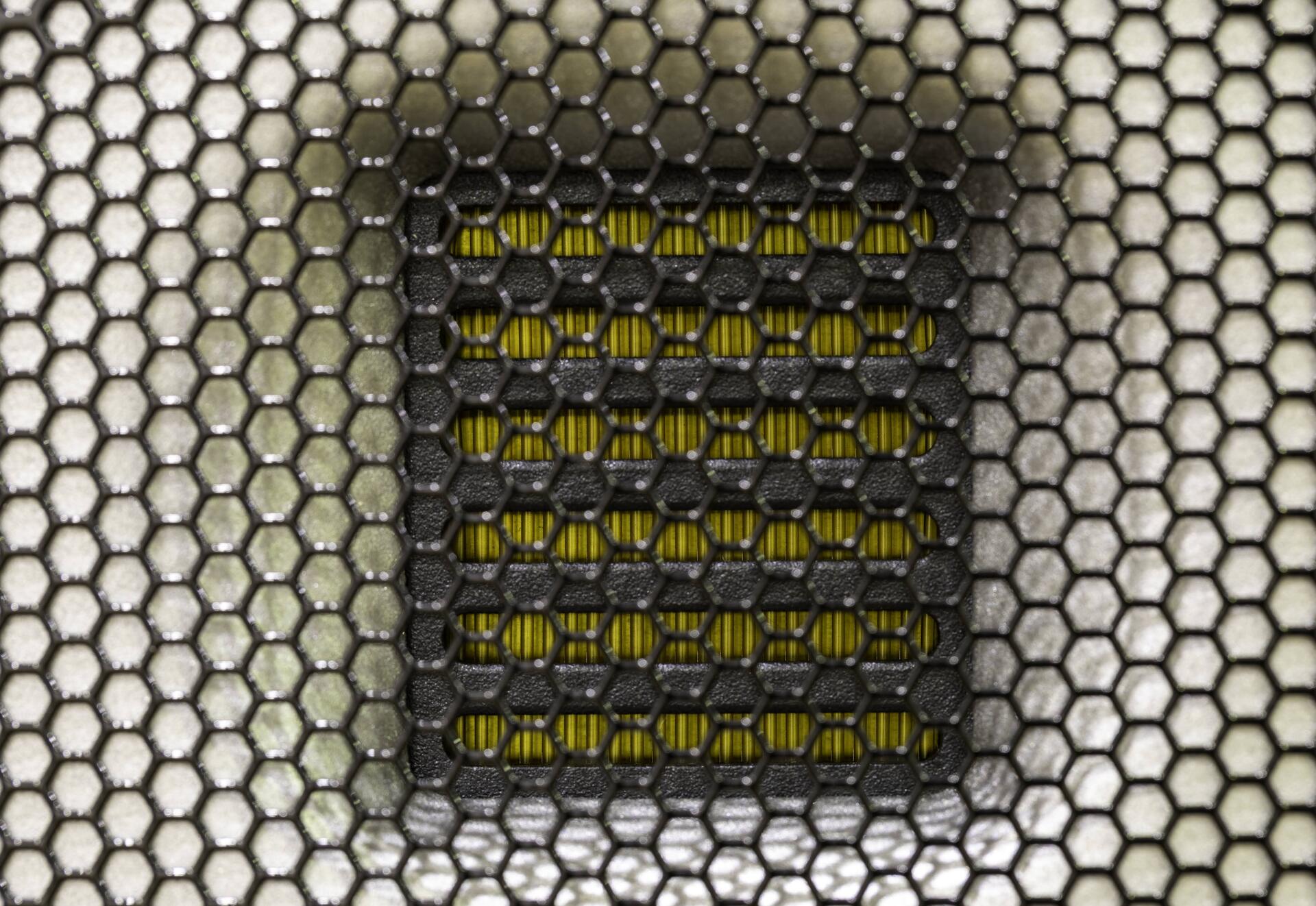
From our experience, after listening to countless drivers and even venturing deep into the DIY areas, testing legendary tweeters from ViaWave, RAAL, Mundorf, domes made from silk or aluminium from SB Acoustics, even ones with exotic materials like ceramics from the famous Accuton brand and berilyum from Scanspeak, or the famous Raidho ribbon, we found the MPD3 tweeter from Monitor Audio to be one of the best we’ve ever heard. It strikes a balance between technical precision and emotional engagement, delivering a clean and open presentation that’s both highly detailed and remarkably natural and smooth.
The first thing that stands out is how sparkling and extended the top end feels, there’s air, shimmer, and micro-detail in abundance, yet never a hint of sharpness or fatigue, and this is the most important aspect of it. High frequencies seem to float freely in space, adding a sense of depth and dimension that few other tweeters can match. Even when pushed to higher SPLs, the MPD3 remains composed and controlled, showing no trace of strain, distortion, or frequency intermodulation.
Its clarity and refinement make it easy to follow every nuance of a recording, from the delicate decay of cymbals to the breathy texture of vocals. The transient response is lightning-fast, giving percussive elements a lifelike snap while maintaining a sense of smoothness. Unlike some aluminum dome tweeters from well-known brands, which can introduce a faint metallic sheen to the upper registers, the MPD3 remains free of coloration. There’s no artificial brightness, no hardness, no “metallic” tint imposed on vocals, for example. The speakers adapt beautifully to the source material, delivering a true-to-life metallic feel when the music calls for metal, natural when natural is intended. For example, a singer’s “s” sounds clean and effortless, without that sharp, sizzling edge that many metal domes tend to emphasize.
We also noticed how the square radiating surface and carefully designed waveguide contribute to a stable and expansive soundstage. Keep in mind that one of the biggest disadvantages of an AMT/ribbon tweeter is its directivity, which is why we carefully tested this, and it left us feeling that it is, in fact, uniform both horizontally and vertically. The speaker’s stability in the vertical plane is excellent thanks to the combination of several factors: first, the close alignment of the midrange and tweeter axes plays a key role, second, the relatively low crossover frequency of 3 kHz, as specified by the manufacturer, contributes significantly. We can often confirm this by observing how the speaker’s response changes at different listening angles around the crossover point, but in this case, the response remained remarkably consistent. This is important because it allows for a wide sweet spot and precise imaging. We found that instruments and voices occupied well-defined spaces, surrounded by air, yet remained coherent and anchored.
In long listening sessions, the MPD3 impressed us with its resolution and transparency, and most importantly with its musical grace and smoothness. Few tweeters manage to combine such speed, extension, and tonal balance without becoming analytical or clinical. It is a remarkably refined transducer that elevates the listening experience far beyond expectations. It’s a tweeter that reminded us how thrilling, engaging, and simply beautiful well-reproduced treble can be.
Midrange (RDT III, 4-inch):
Monitor Audio’s latest RDT III cone brings a few key upgrades. The back layer now uses two matching carbon fiber skins to better control breakup.
The midrange of the Platinum 200 was indeed a revealing experience. From the first notes, it was clear to us how much care has gone into controlling distortion and maximizing clarity. This stood out at first glance. From the white paper, Monitor Audio says that the reworked cone edge and tuned rubber surround allow the driver to run cleaner and wider than a typical midrange unit, which translates directly into a more natural and transparent sound. Vocals felt lifelike and expressive, with every nuance intact, while instruments retained their harmonic richness without ever sounding harsh or colored. Even complex passages with multiple layers remained intelligible, each element distinct and accurate.

We believe that one of the many aspects that make this driver so impressive is the unique combination of its high-strength neodymium magnet and underhung edge-wound voice coil. The magnet creates a stronger, more precise magnetic field than a typical ferite type would, giving the diaphragm tight control and reducing distortion, especially at higher volumes. Compared to ferrite magnets, this results in faster, more accurate transient response, better efficiency, and a remarkably consistent tonal character, all without adding any unwanted coloration. The Dynamic Coupling Filter further smooths cone breakup above the crossover frequency, ensuring the transition to the tweeter is seamless and natural.
The overall effect is a midrange that is both commanding and delicate, capable of handling high excursion without losing composure. Whether it’s a solo vocal, an acoustic guitar, or a dense orchestral passage, the Platinum midrange presents it all with clarity, control, and a smooth, unforced musicality. It’s a driver that feels refined and, more importantly, lacks coloration of any type. We felt it delivered the natural warmth of a paper cone while maintaining the precision and clarity of a hard cone. There was never a trace of the subtle metallic shimmer or resonance so common in aluminum drivers, which is a statement on its own.
Bass drivers (RDT III, 6-inch):
The Platinum 200 3G’s two woofers use the latest RDT III cones: ultra-thin alloy and carbon fiber skins over a Nomex® core, plus a new dual carbon rear skin for better breakup control and a revised surround for lower distortion at high excursion.
Both 6-inch woofers use an underhung, single-layer edge-wound voice coil. This choice is a big part of why the Platinum 200 3G delivers bass that’s gentle and finely textured, never aggressive or overblown, always clean and precise. The 6-inch drivers get a 50mm voice coil (compared to 75mm on the 8-inch Platinum 300 woofer), both specifically designed for thermal stability during demanding sessions.
The voice coil is shorter than the magnetic gap, so the moving part never leaves the strongest part of the magnetic field. This keeps distortion low and response linear, even when playing louder. The magnet assemblies are oversized and well-vented for thermal stability and less dynamic compression when driven hard. Both drivers are loaded via rear ports, tuned for speed and definition rather than outright extension.
A side effect of this design is that while the bass stays clean and well controlled, there is a lower than expected ceiling on maximum output, low-end extension, and punch. This aligns with what we heard: low distortion and no boominess, but also no real sense of scale or physical slam. You get accuracy and control, but not the kind of bass that fills the room or pushes air like a long-coil, high-excursion woofer would. This design choice prioritizes precision and linearity over sheer impact.
Monitor Audio’s latest RDT III membrane is a multi-layer sandwich with C-CAM (Ceramic-Coated Aluminum Magnesium) for the front skin and dual carbon fiber layers on the back, bonded over a Nomex® honeycomb core. This construction was designed for maximum rigidity and internal damping, pushing breakup modes well out of band and minimizing resonance.
As we specifically listened for any coloration or artificial “material tone” in the midrange, we conducted the same tests on the bass drivers and found none. No metallic ring, no harshness, no unwanted warmth or even hardness in the lower frequency ranges. No matter what track or volume, the drivers stayed neutral and transparent. Whatever you feed in, that is what comes out, with the membrane material never making itself known.
II. Placement & Setup
We are fanatical experimenters when it comes to setup, and the Platinum 200 3G rewarded this obsession. Right out of the box, the treble energy struck us as very high, not sibilant, not harsh, but undeniably present, and we believe it would punish anyone who simply dropped them in the old speaker footprints …and hoped for the best.
We found that the trick was to start with a slightly wider than usual spacing and a toe-out position, never aiming the tweeters directly at our ears. The best balance emerged when the tweeter axes were well away from our ears. When pointed straight at us, the top end would overwhelm the rest of the presentation in a way that tilted the tonal balance up, robbed the midrange of some body, and made the soundstage feel too forward.
When we finally got it right, including matching the amplifier and cables, the payoff was immense: a treble that sparkled without biting, a midrange that sat perfectly in balance, and a soundstage that reached further back than expected. Immersive, deep, and precise in lateral imaging, and so emotionally engaging that it allowed listening with pleasure for hours, without any sign of fatigue.
When we got it wrong, we were left with a speaker that was robbing some recordings of their natural warmth. Not necessarily sharp or piercing, nor sibilant, but ultimately tiring and a bit out of step with itself.
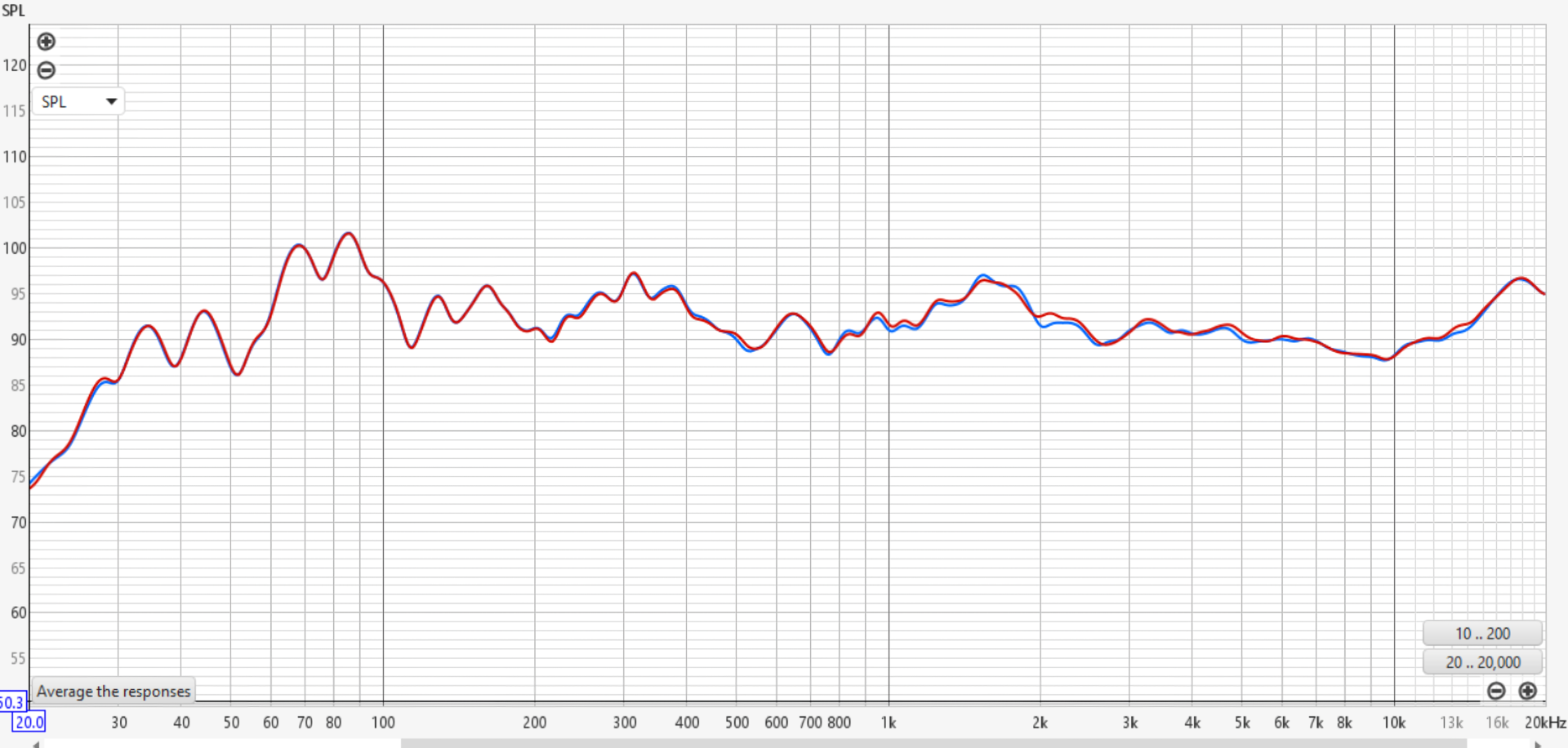
What you see above combines 10 measurements, using the MiniDSP UMIK-2, averaged per cable. Red = VDH The Magnum; blue = Roboli HP8000. Even though the differences you see in the graph are minimal and some may consider them negligible, the listening experience revealed much more. We preferred the Roboli in our setup.
Please do not treat this as a reference response. The room is not a dedicated measurement space, and walls/placement heavily affect bass response. This plot does not represent the speaker’s true anechoic behavior; it only illustrates (measurement-based) how a simple cable match changed our in-room listening impressions. The measurement also offers a rough sense of the in-room response that we obtained. It is a nice starting point to illustrate how a good, balanced speaker behaves, which is one of the solid foundations of natural sound.
We can clearly see several “flavors” of the PL 200 3G: a hill at 300Hz, another one at 1.5kHz, and another rise at 16 kHz. Perhaps it would be better without them, but these are the details that define the speaker’s character, its tonal signature, the way it sounds, if you like. The overall impression is shaped by entirely different, subtler factors that aren’t visible in this measurement, how it handles sonic delivery in the time domain being one extremely important factor. The truth is that you can’t really tell how a speaker sounds or feels just by looking at the graph, but if you’ve spent enough time both measuring and listening, you start to get a sense of what those numbers actually mean sonically.
An aspect that we liked about the speakers is that their ports are positioned on the back, allowing for flexible room tuning. As you know, moving them closer to the wall reinforces the bass, which can be beneficial in spaces that lack low-end energy. Conversely, in naturally bass-heavy rooms, the supplied port plugs help attenuate the lows and achieve a more balanced response. This measurement was taken without the supplied port plugs installed.
Throughout our listening sessions, we had 1-port plug installed to reduce some of the excess energy that the room would induce, at around the 60-100 Hz region.
System Synergy: Amplifier Pairing Effects
Throughout our time with the Monitor Audio Platinum 200 3G, we made a point to rotate through several different amplifiers and DACs, each chosen for its unique character and ability to reveal both strengths and limitations in any loudspeaker. We knew from the outset that the 3G’s revealing nature would quickly expose any mismatches in electronics, and we were not disappointed. The differences between amplifiers were unmistakable and, at times, transformative.
We began with the Chord Ultima Integrated, as spoken earlier: a brutally honest and highly resolving amplifier that had never shied away from exposing flaws elsewhere in the chain. Connected to the PL200 3G, the Chord brought out every last drop of microdetail up front.
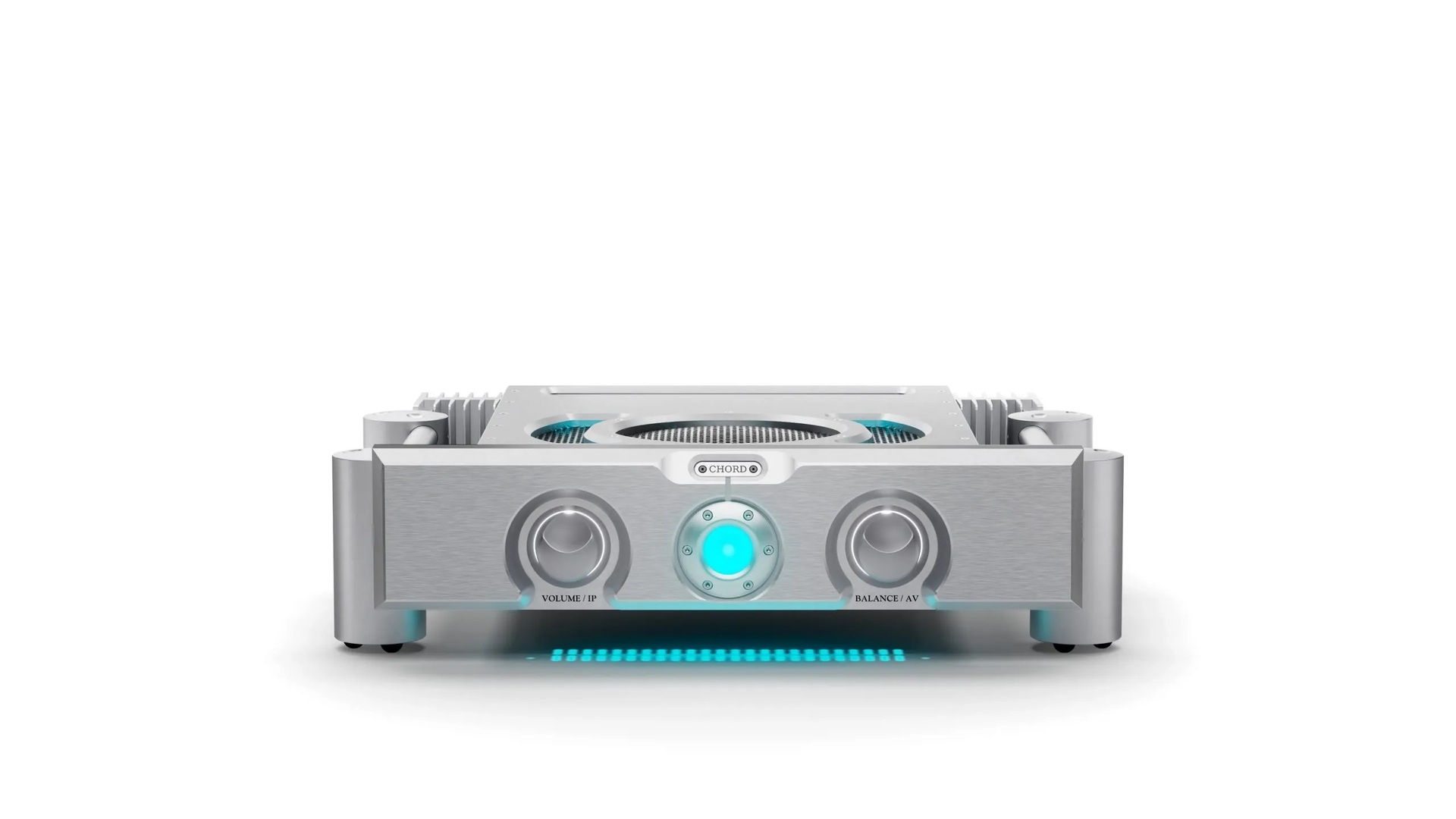
Highs were crystalline, fast, and effortless, and the overall sound gained a difficult-to-explain sense of transparency. This pairing excelled in showcasing the speaker’s talents in the retrieval of subtle musical cues, layering, and decay. However, the Chord’s unflinching approach also meant that any thinness or restraint in the midrange and bass became more apparent. Recordings that were already a touch lean or bright became less forgiving. The upside was that the sense of speed and separation was peerless; the downside was that this setup could sometimes leave us longing for a bit more tonal warmth and body, especially during extended listening sessions.
Next, we listened to the Aesthetix Mimas (recently reviewed here), a hybrid design known for its ability to inject music with a dose of tube sweetness and organic texture. With the Mimas at play, the Platinum 200 3G took on a subtly different character. The treble, while still extended and vivid, softened just enough to let the midrange step forward. Vocals gained a touch of warmth, and instruments that previously sounded only accurate now felt more tangible, more human, more alive. The Aesthetix amplifier had a way of rounding the sharpest edges without blunting the speaker’s natural detail. We found ourselves listening longer and more comfortably. The bass, too, filled out just slightly, and the overall presentation became more inviting, less analytical, and perhaps closer to what we imagine the speaker’s designer would have wanted for real-world, living-room listening.
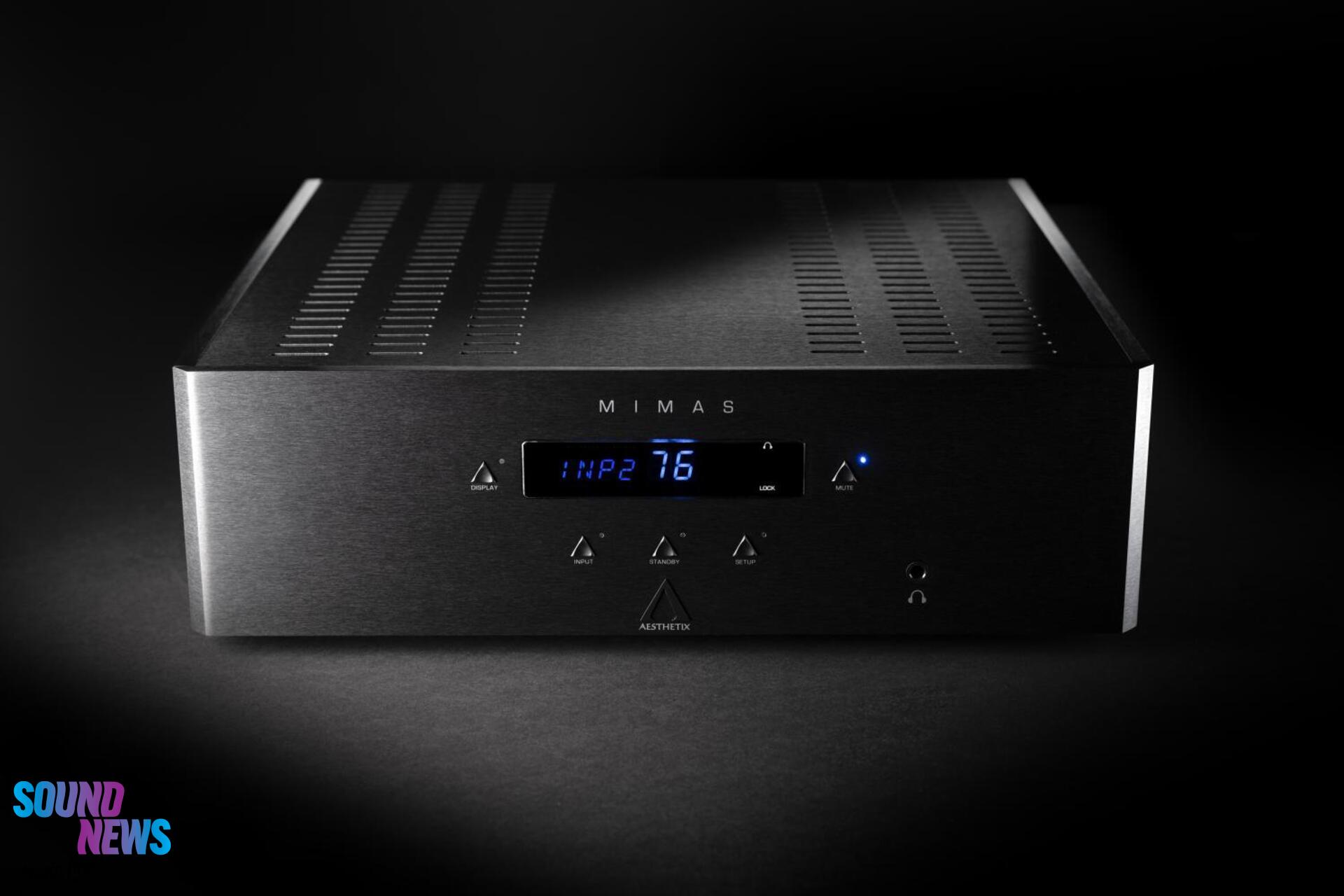
Even so, we’ve had some audiophile buddies invited over for a listening session, and there were a few instances when one or two of them preferred the more dominant, faster, impactful presentation that the Chord displayed.
Lastly, we turned to the Burson Timekeeper Voyager, a solid-state design renowned for its class A operation. This pairing revealed another side to the PL200 3G, one where dynamics came to the forefront and the speaker’s rhythm and drive became more evident. While the Voyager did not have quite the same lush midrange as the Aesthetix or the sense of power and control displayed by the Chord Ultima Integrated, it offered a more energetic take on the Platinum’s microdetail character, adding a sense of excitement to up-tempo tracks and complex arrangements.

The tweeter remained the highlight, but now with a greater sense of urgency, and the bass, while not fundamentally deeper, felt quick and nimble at low listening levels. This was the combination we reached for when we wanted to feel the music’s pulse and pace, even though it didn’t fully compensate for the speaker’s somewhat restrained tonal richness.
I. Listening Impressions:
Treble and Microdynamics
The MPD III tweeter dominated the initial listening experience. It drew us in with a level of microdetail and transient precision that we rarely felt. We played track after track, always coming back to the same realization: It delivers clarity without harshness, sparkle without edginess, and a natural smoothness that makes everything feel so pleasant, delightful, and incredibly easy to listen to, leaving a sense of lightness and grace to every track we listened to.
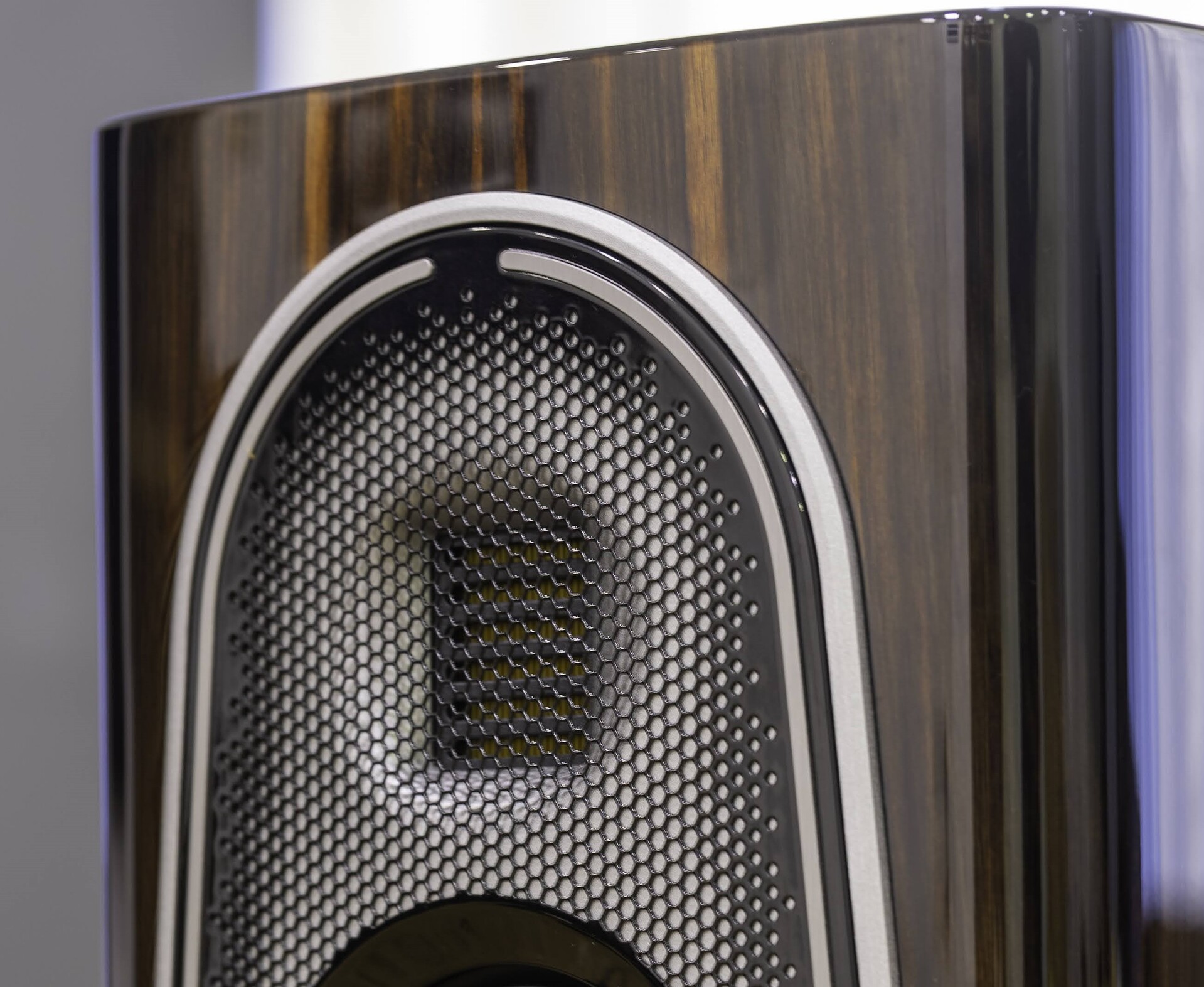
To test tweeters and reveal any flaws, we often turned to music that is both challenging and revealing, tracks where any imperfection would be immediately noticeable: cymbal brushes on Diana Krall’s Temptation, the shimmering synth textures in Yello’s The Race, or the delicate acoustic guitar work in Aurora’s Through the Eyes of a Child. Across countless tracks, the tweeter never sounded harsh, annoying, or intrusive. It vanished from perception, allowing the instruments to take center stage, but also made the music feel smooth and incredibly enjoyable.

The speakers managed to easily retrieve subtle details like brush strokes, trailing echoes, and harmonics that lesser designs tend to gloss over or flatten. When called upon, there was always a sense of air, of high-frequency information, delivered with zero etch or grain. The subtlest sounds, soft brush strokes, slow, deliberate movements, delicate shimmers, and even ASMR-style content sent literal chills down our spines. Every whisper of texture and tiny nuance in the recording was reproduced with astonishing smoothness and clarity. The MPD3 tweeter captured the faintest vibrations and intricate overtones, making these quiet, intimate moments feel just like that, present, intimate.

The way the tweeter preserved separation and definition even at lower volumes was also something we noticed again and again. On Pernille Rosendahl’s Fire, for instance, we could hear the finest gradations of her vocal breath and the decaying resonance of piano notes, all holding together with remarkable integrity even at low listening levels 70–80 dB. The microdynamics, the smallest variations in phrasing and texture, were delivered intact, allowing the emotion of the performance to come through at any level. On Annette Askvik’s Liberty, the PL200 3G let us physically feel the plucking of strings, while the shimmer and spatial decay of harmonics seemed to float well into the room.

We took out some of our classic “torture” tracks, the kind audiophiles use to expose weaknesses in transient attack or treble extension. Dire Straits – Ride Across the River and Hugh Masekela – Stimela revealed the same pattern: the Monitor Audio handled fast transients with good precision, mapping every tap and percussive hit into the acoustic space with good speed. With Youn Sun Nah – My Favorite Things, the top-octave energy and sense of air around her voice were rendered in three dimensions, but again, never crossed the line into harshness or clinical thinness. We did not hear any trace of sibilance.
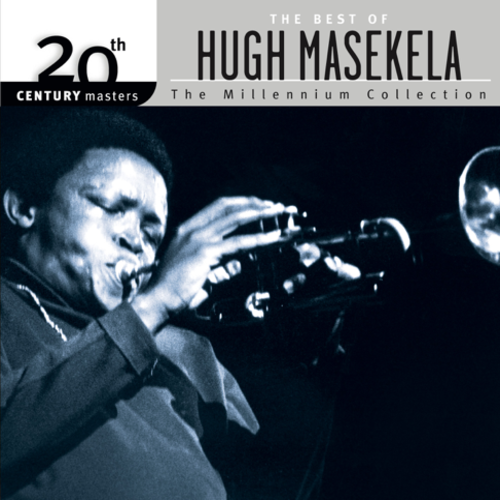
Another one of the highlights for us was how well the tweeter “disappeared” in the context of the whole presentation, when positioned correctly. The speaker walked a fine line: it offered all the insight and brightness a detail-lover could want, but never at the expense of musicality. We never once felt the need to throw a blanket over the tweeter, something that can easily happen with metal dome designs. The PL200 3G managed to get out of the way and let the music flow.
We appreciated not just the level of detail, but also its quality. Microdynamics were present in a way that reminded us of electrostatics, ribbons or the best beryllium domes, but with more body, more realism, and never any sense of fragility or sharpness and sybilance.

It was not perfect. The price for all this insight was an unforgiving attitude toward poor recordings; harshly mastered tracks became a challenge, and “hot” digital sources could bring a bit too much energy if care was not taken with system matching and positioning. We could forgive the ruthlessness when the payoff was this level of transparency, speed, and musical truth.
Now for one of our favourite genres: electronica, we started with E-Mantra – “Silence (RMX) (Original Mix)”. The PL200 3G immediately mapped the ambient field: discrete echoes peeled off synth hits and percussive ticks, each reflection easy to count and place in depth. Layering held firm; we could clearly differentiate primary notes from auxiliary effects and low-level textures without the mix collapsing or smearing.

Microdetail was exceptional: modulation tails, filter sweeps, and the faint shimmer around transient edges stayed intact at both low (70–80 dB) and higher levels. The continuous “crickets” bed sounded eerily real: fine grain, envelope, and decay were rendered with convincing lifelikeness rather than a generic hiss. Timing felt tight, with leading edges crisp and decays trailing into a quiet, black background that made reverbs and delays pop into three-dimensional relief. The audition left us with a sense of delicacy and pleasure that we rarely experience. A true highlight. Special praise goes to Emanuel Carpus for his artistic vision and compositional wisdom; the atmosphere and detail in his work make this track stand out as a benchmark for testing both system resolution and emotional impact.
Moving to another great track that had us hooked: Yosi Horikawa – “In the Wind” (from the 2019 album Spaces, 4:32, Borrowed Scenery). We started the cut, and the room opened up sideways and deep, soundstage clearly wider than the speakers and extending well behind them.
The PL200 3G made the ambient field easy to map: discrete echoes peeled off percussive ticks and soft chimes, with each reflection countable and placed in depth; notes and incidental effects stayed separate even when the mix thickened. The chime work felt tactile rather than splashy, and the low-level bed, wind, tiny movements, and micro-textures read like field recordings in three dimensions, which fits Horikawa’s known obsession with location sound and spatial cues. Microdetail was outstanding here: modulation tails, air movement, and reverb decay hung in space without grain, reinforcing that “clean, low-distortion” impression we heard across the band.


We want to add one more track as a reference Licht Prakash Light – Inkarnation. This is a piece that’s especially dear to us, having heard it on hundreds of systems over the years, and it always takes us back to earlier days. The high-frequency content in this track can be suffocating if the speaker leans even slightly bright, and the level of microdetail needed to get it right is extremely high. Once again, the PL200 3G amazed us, delivering control, subtlety, and nuance that left a real impression. This was a performance we will remember for a long time.
Midrange, Tonal Balance, Physicality, and Realism
After we became accustomed to the showstopping performance of the tweeter, our attention, which naturally should shift to the midrange frequencies, now did just that. The region that, more than any other, tends to make or break a speaker’s ability to sound realistic.
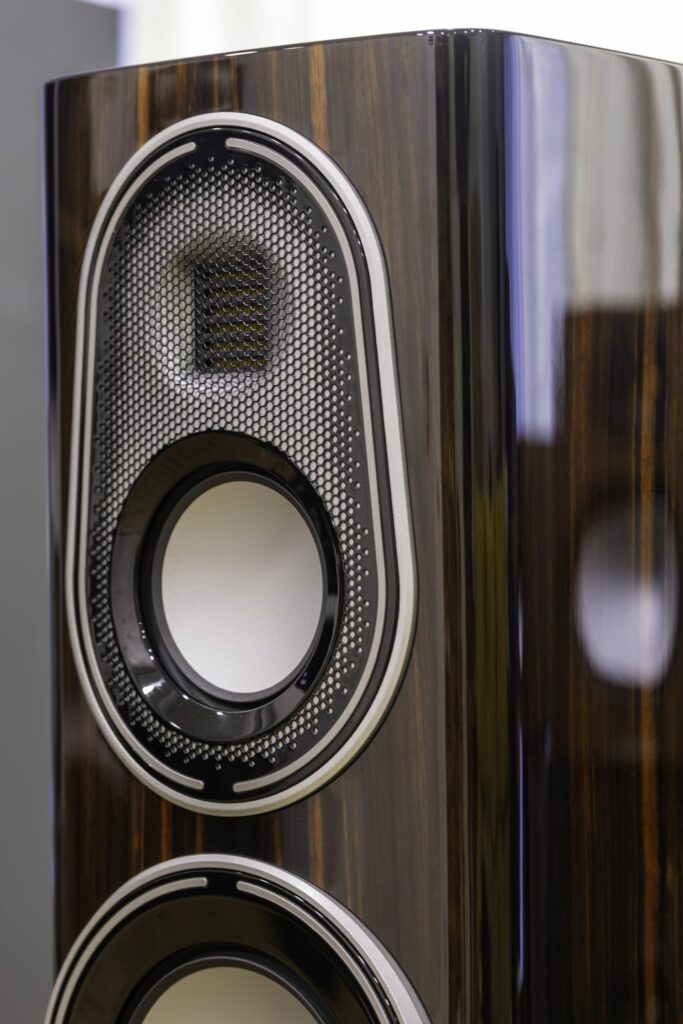
Tonally, the midrange walked a remarkably fine line. It never once drew undue attention to itself. There was no spotlighting, no forwardness, no attempt to “wow” with presence or push voices toward the listener. The speakers maintained a steady, almost stoic neutrality. To some ears, this might have come across as restrained, perhaps even lacking in personality. At times, we ourselves wondered if this tonal balance might cross the line into blandness, leaving us searching for something to latch onto. Yet, the more time we spent with the PL200 3G, the more we began to see this as a virtue rather than a flaw, a refusal to shape or color the music just for the sake of impressing.
Achieving this delicate balance, teetering between standing out and blending seamlessly into the background, required careful trial and error and meticulous matching. It was only through this attentive process that the midrange could convey its character and presence, for without it, the performance risked feeling restrained and lacking the subtle vitality that makes the music engaging. What first struck us as understated (for the first 5-7 days) gradually revealed itself as a kind of honest confidence, the sort that quietly wins you over the longer you listen. The more we compared the Platinum to its rivals, the more we came to appreciate this virtue.
We liked how this neutrality did not translate into sterility. On the contrary, we experienced a kind of invisible support, as if the midrange existed to bind together the upper and lower registers without ever making its own presence obvious. On vocal-centric tracks like Diana Krall’s A Case of You or Youn Sun Nah’s My Favorite Things, voices emerged naturally, rich in harmonics, neither nasal nor chesty, always centered and perfectly scaled.

We did notice, however, that this approach came with trade-offs. While the midrange never sounded thin, there were moments when we wished for a touch more physicality, a bit more chest and tactile presence in certain voices, or that last bit of “wood” in acoustic instruments. On tracks where the performer’s energy was meant to fill the room, take, for example, the forceful plucking in Sophie Zelmani’s My Soul Remembers, or the rawness in Mark Knopfler’s voice on Ride Across the River, the PL200 3G erred on the side of subtlety. The physical dimension was certainly present, rendered with delicacy and finesse rather than with sheer brute force.
Of course, every listener brings their own preferences and expectations, and all reviews remain inherently subjective. That said, in our honest opinion, a speaker’s true measure lies in its ability to deliver both subtlety and power when called upon, effortlessly conveying the quietest, most nuanced details as convincingly as the boldest, most commanding passages. Achieving this balance requires careful engineering, thoughtful design, and a sensitivity to the music’s intent. While we appreciated the graceful finesse on display, we also believe that a speaker worthy of serious consideration must be capable of rising to the occasion, filling a room with authority without losing the delicate textures that make the performance engaging and lifelike, and here, I would like to believe that the the larger model in the lineup, the Platinum 300 3G, is more than capable of rising to the occasion, giving listeners the chance to explore greater scale while preserving the refinement and nuance of their smaller sibling, reviewed here.
That being said, the speaker still managed to surprise us on more than one occasion. There were moments, especially with high-resolution, high-dynamic-range recordings, when it seemed to step outside of its restrained character and deliver a startling sense of dynamism.

On Salvatore Licitra – “Je crois entendre encore”, the tenor’s voice carried a gentle airiness throughout the entire performance that we thoroughly enjoyed.
Timbral accuracy was on point, with excellent dynamics and a level of emotional engagement that caught us off guard. We found ourselves completely absorbed, unable to skip a second, drawn in and held by both the realism of the midrange and the strength of Licitra’s delivery.

“Lacrimosa” by Zbigniew Preisner showcased the Platinum’s ability to anchor a scene with powerful bass, giving the soundstage real grandeur.
The emotion carried by the violins, paired with the sheer weight and majesty of the lead vocal, came close to moving us to tears. Three-dimensional layering was top tier: each instrument stood apart, every contour clearly mapped. Both voice and string articulation were standouts, coming together for a grand, immersive display that we genuinely enjoyed from start to finish.
If we had to level criticism, it would be that some listeners may prefer a bit more drama, a bit more presence, or a more romantic bloom. There are speakers in this range, like the B&W 803D4, which does come in at a higher price, that go for a more inviting, warmer presentation. But in our experience, the 803D4 can be far more demanding when it comes to system matching, and getting the best out of it is not always straightforward. The PL200 3G was not that kind of performer. It played things straight and true.
Bass Performance, Dynamics, Extension, Impact, SPL Limits
We know from experience that underhung voice coils are a double-edged sword: great for keeping bass clean and controlled, but sometimes at the expense of outright impact. So while we expected excellent precision from the Platinum 200 3G, we were curious to hear whether that control would come with enough weight and punch, or if something would be left on the table.
Throughout our time with these speakers, we explored a wide selection of high-energy recordings, tracks renowned for their impact and impressive dynamic range. Below, we’ll discuss just a few standout examples to illustrate how the Platinum 200s handle the demanding shifts in intensity and scale.
We start our eulogy with the playful yet explosive Johann Strauss II – Explosions Polka, Op. 43, a good piece to showcase the Platinum 200’s agility and control. The rapid orchestral bursts, sudden dynamic contrasts, and shimmering brass passages reveal just how well these speakers can handle quick transients without sounding congested. The upper registers sparkle with clarity, while the rhythmic drive remains taut and lively.

At higher volumes, the Polka’s percussive outbursts retain their crisp definition, never turning harsh, a testament to the refined top-end of the MPD III tweeter. If there’s a slight softening, it appears in the deepest bass hits, where the Platinum 200 prefers precision over sheer mass. The speaker’s compact cabinet and smaller woofer configuration inevitably impose limits on outright impact and maximum SPL. When the orchestra swells or the crescendos demand full-scale punch, the Platinum 200s deliver control and composure rather than visceral slam. The presentation remains clean and dynamically nuanced, but the sense of sheer physical force, the kind that makes you feel the “explosions” in your chest, is limited.
Still, within its comfort zone, the Platinum 200 paints the Explosions Polka with precision, timing, and sparkle, favoring musicality and refinement over brute volume and spectacle.

Another classic, dynamic heavy track, Money by the iconic Pink Floyd, is rendered the same sense of balance and poise that defines its overall character. The iconic cash-register intro and bass riff emerge with impressive separation and clarity — every coin clink and tape loop sits in its own space, surrounded by a clean, open soundstage. The midrange renders the vocals and guitars with a natural, unforced presence, while the treble stays smooth and detailed, letting cymbal hits and guitar textures breathe without glare.
When the track opens up and the band starts to push, the speaker maintains composure and timing beautifully. However, the moderate SPL ceiling becomes noticeable, the rhythmic drive and low-end groove lack some of the visceral weight that gives Money its swagger on larger, high-output systems. Kick drum hits are tight and well-defined, but there is no real chest impact.
Still, the Platinum 200 compensates this with precision, imaging, and tonal balance. It delivers Money as an articulate and engaging listen, more studio-accurate than raw, prioritizing definition and coherence over sheer punch.
The Platinum 200 delivers a bass that is present and articulate, never veering into boominess. Yet, despite its clarity and control, we found ourselves wishing for a bit more weight and physicality, as the low end could benefit from a greater sense of impact and depth. On certain tracks, Geoff Castellucci’s The Sound Of Silence, Yello’s The Race, or the opening bars of Liberty by Annette Askvik, we caught ourselves wanting that last bit of subterranean pressure combined with the feeling of chest pounding. It was a constant reminder: this is why we obsess over room placement and amplification.
To its defense, we appreciated that there was no artificial boost, no hyped-up frequencies demanding bass traps or room correction. We heard a clean, controlled foundation that kept its place in the musical picture.

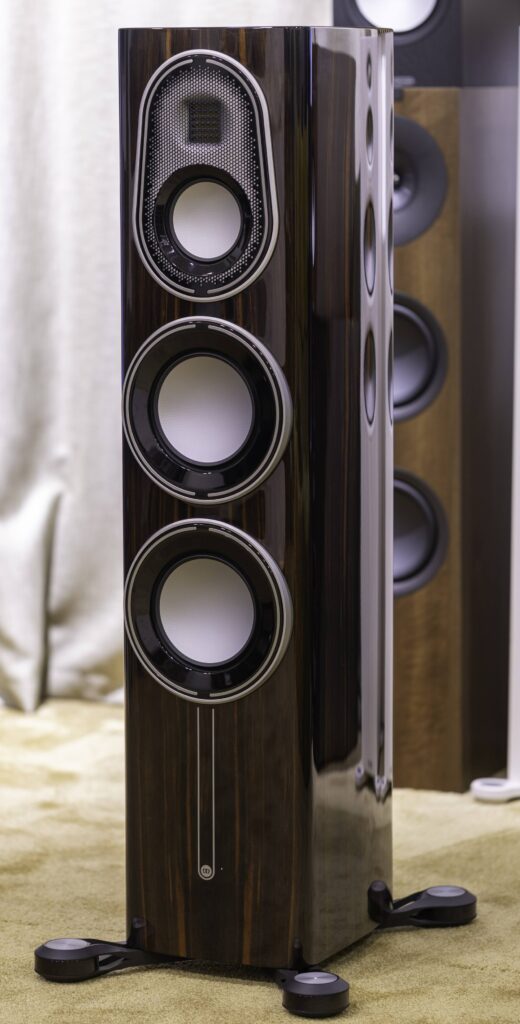
When it came to bass extension, we found the lower limit respectable, but not boundary-pushing. Monitor Audio’s specs suggested a roll-off below 32 Hz, and our ears confirmed it. With everyday music, the speakers held up well, delivering enough fullness to make most genres satisfying, but when the program material demanded the deepest fundamentals like a pipe organ, the bottom end of a synth, or the lowest notes on a well-recorded double bass, there was a sense that the absolute lowest octave was simply missing in action. Tracks with massive sub-bass content, the kind that rumbles through your floorboards, left us unsatisfied.
We decided to push the speakers to their limits, not with test tones or laboratory noise, but with real-world listening at serious volumes. In our space, the Platinum 200 3G could reach a genuine 109 dB SPL (C-weighting) at the listening position, roughly 3.5 m away, (measured, not estimated) on dynamic peaks before audible distortion crept in. This was with actual music, not synthetic bursts. Once we approached this threshold, we noticed the onset of strain, particularly in the bass region. The sound remained composed, never collapsing or devolving into chaos, but it was clear that these were not designed for outright party levels or for filling cavernous rooms with wall-shaking bass. The 3G preferred to stay within its comfort zone, rewarding us with poise and composure rather than brute force.
One aspect we consistently appreciated was the lack of “one-note” bass or resonant coloration. No matter the genre, whether it was the nimble acoustic bass lines in Dire Straits – Ride Across the River or the synthesized pulses in Yello, the PL200 3G rendered low frequencies with clarity and pitch definition.
Bass notes started and stopped with confidence, never bleeding into the mids or overstaying their welcome. The entire low end felt like an extension of the midrange.
One good example is Govi – “Euphrates”. We usually turn to this track for its sparkling, energetic highs, but the PL200 3G flipped the script.

Bass was exceptional here: articulate, precise, and completely composed. What grabbed us most was the seamless coherence from bass through mids to treble; nothing stuck out. With the way the PL200 3G presents itself as being hot (or bright, as others might say), we did not expect this level of coherence and bass performance to be shown on this track. Total surprise, and a clear highlight that changed our view of what this speaker can really do with regard to the bass region, when given the chance and conditions.
That being said, the Platinum 200 3G is not a speaker for the bass addict. If you crave earth-shaking, cinema-grade low end, these speakers might leave you wanting more. But for those who value accuracy, articulation, and seamless integration, prefer the music as recorded, rather than “as enhanced”, the bass performance of the Monitor Audio proved not only sufficient but genuinely rewarding.
In the end, the bass region reflected the same philosophy we heard throughout the speaker’s design: a commitment to balance, honesty, and musical coherence. It may not have rattled the doors, but it never once drew attention to itself for the wrong reasons. And more often than not, we found that to be exactly what the music needed.
III. Comparisons with KEF Reference 3 and B&W 804D4
No review of the Monitor Audio Platinum 200 3G would be complete without placing it alongside its natural rivals, so we made a point to bring in two of the most respected competitors at this level: the KEF Reference 3 and the slightly more expensive Bowers & Wilkins 804D4. All three are British companies, each with decades of heritage and engineering expertise. Each company brings its own distinctive house sound to the table. While all target the same discerning listener and are revered for their meticulous design and build quality, their sonic personalities are very different.

The KEF Reference 3’s calling card has always been its point-source Uni-Q driver, and, true to form, the KEF delivered a sound that was laser-focused, precise, and unmistakably locked in. Instruments and voices snapped into place on the soundstage, and with tracks like Yello’s The Race or Dire Straits’ Your Latest Trick, we consistently heard better control, impact, and macro-detail. The KEF was a bit more forward in the midrange, the highs a touch more assertive, the bass punchier and quicker off the mark. However, when it came to microdetail, precision, midrange cleanliness, articulation, sparkle, air, and overall clarity across the frequency band, the Monitor Audio took the crown.
The more time we spent with both, the clearer the differences became. Where the KEF impressed with its directness and impact, the Platinum 200 3G drew us in with its effortless air, finer micro-dynamics, and a sense of inner depth that the KEF, could not match. The Monitor Audio’s soundstage was not as pin-sharp in lateral focus, but it compensated with a more immersive front-to-back layering. On well-recorded acoustic tracks and live performances, the PL200 3G disappeared, presenting music as an organic whole, rather than as a collection of sharply placed points.
This contrast became even more obvious off-axis. The KEF’s aluminum dome highs, already a touch more aggressive, could verge on fatigue with brighter recordings, especially when listened to head-on. Its bass, though more impactful and “kick-heavy,” sometimes threatened to overshadow the midrange. The PL200 3G, in contrast, always kept its composure; it never veered into sibilance or harshness, and its bass, though more reserved, remained a bit more balanced.
It also became clear that the KEF favored macro-detail, the bold dynamic swings, the punch and drive of a full band hitting its stride. It thrived on rock, pop, and electronic tracks that called for immediacy and snap. The Monitor Audio, on the other hand, won us over with its ability to reveal the tiniest musical gestures: the shimmer of cymbals, the breath in a vocal, the space after a note faded. These moments felt more lifelike and immersive than with the KEF, whose technical prowess and powerful impact seemed to somehow miss such subtleties.
To be clear, the KEF was not outclassed. Its scale, impact, and authority in the bass department give it the edge in rooms where those traits matter most. Its precision and monitor-like sound will suit listeners who want absolute order and immediacy. Yet, we found the Monitor Audio excelled when we wanted to relax into the music, to be enveloped rather than dissected, to lose track of time rather than keep it.

Listening to “The Silence” by Manchester Orchestra through the Monitor Audio Platinum 200 3G immediately immersed us in the chill, atmospheric opening of the track. Andy Hull’s voice came through with remarkable intimacy, each word carrying subtle emotion without ever feeling forced. The delicate instrumentation, the ambient guitar textures, soft piano, and restrained percussion felt spacious and precise, giving the track a natural, airy quality that invited emotional listening. The PL 200 rendered the quiet moments with finesse, allowing us to sense the weight and emotion behind every note while keeping the overall presentation relaxed and unhurried.
Switching over to the KEF Reference 3, the voice retained its clarity, but the sound felt slightly more forward, with a bit more immediacy in the midrange. The chill opening maintained its intimacy, though the sense of space was a touch more defined on the KEF, offering slightly more separation between the instruments. It presented the track with controlled energy, speed, and urgency, hinting at the build-up to the more dynamic sections as if sitting on a bed of nails, charged with anticipation.
As the track progressed toward the explosive rock section, both speakers showed their true character. The Platinum 200 3G handled the transition gracefully, letting the guitars and drums surge forward without ever losing composure. The track felt dynamic, controlled, and Hull’s vocals remained expressive, cutting through the mix with emotional intensity. The KEF Reference 3, on the other hand, gave the finale a more visceral push, the transient attack of the drums and the punch of the guitar hits felt slightly more immediate, creating a sense of raw energy that made the ending truly electrifying, hinting at a live type of performance rendition of the track.
Ultimately, both speakers revealed different facets of the track. The PL 200 emphasized microdetail, delicacy, intimacy and emotional nuance, making the quiet, introspective moments deeply engaging, while still delivering satisfying power in the climactic finale. The KEF Reference 3 brought a touch more drive and speed to the midrange, highlighting the track’s energy and dynamics with a slightly more forward presentation. For “The Silence”, both offered compelling experiences, with the choice coming down to whether we favored intimacy and finesse or immediacy and impact.
The Bowers & Wilkins 804D4 is another natural benchmark, and our listening sessions throughout the years quickly revealed both its strengths and its quirks. We found that amplifier pairing was even more critical here than with either the KEF or the Monitor Audio. On most solid-state amps, the diamond tweeter of the 804D4 consistently comes across as harsh, often straying into fatiguing territory, so much so that we occasionally had to cut various listening sessions short. However, once we paired it with the Aesthetix Mimas amplifier, everything clicked into place. The Aesthetix Mimas works its usual magic, taming the upper registers and bringing out the highlight of the B&W: a lush, harmonically rich midrange that immediately sets it apart.
This was the real selling point of the 804D4. The kind of midrange warmth and color that draws you in and holds your attention, track after track. In this regard, the B&W distinguished itself from the Monitor Audio, which favored a more neutral, understated approach. With this matching, vocals and acoustic instruments took on a warmth and body that were simply captivating, and the usual “diamond edge” of the tweeter receded into the background.
Still, the MA retained the upper hand in the treble region. No matter how carefully the B&W was set up, its highs never quite reached the effortless airiness and delicate finesse of the Platinum 200 3G. There was always a sense that the B&W’s diamond tweeter, even at its best, was just a bit more demanding on the ear, just a bit less “disappearing” into the music. The Monitor Audio, by contrast, simply vanished at the top, letting the music breathe without ever calling attention to itself.
In our listening experience, the Monitor Audio Platinum 200 3G and the Bowers & Wilkins 804 D4 handled bass in different ways. The Platinum 200 3G went …not so deep, down to around 33Hz, and stayed clean and slightly linear, the lower mid-bass felt a little restrained. The 804D4 reached even lower octaves and felt more powerful, more impactful. However, this came with its own trade-offs: the bass was less linear and often posed challenges with room interactions. In some setups, it risked overshadowing the mids or blooming just a bit too much, requiring careful placement and possibly some acoustic treatment. In addition, there is no port tuning available for the B&W. In short, the Platinum 200 3G gave a more linear and precise bass, while the 804 D4 focused on deep extension and impact.
For the 804D4, the Mimas represented the best of the B&W signature, lush mids, authoritative bass, and the obligatory refinement treatment of the diamond tweeter. This is where the Platinum 200 3G shines with its world-class tweeter and a natural, coherent balance, the Bowers counters with midrange richness and subbass authority. The choice between them ultimately comes down to priorities: those craving ultimate treble refinement and microdetail can choose the Platinum, while those seeking the emotional weight and warmth of voices and strings might well find the B&W irresistible. A big caveat here: that seductive side of the 803D4 only shows up if you invest serious effort into amplifier, cable, source matching, as this speaker will immediately expose any weak link in the chain, and it simply refuses to shine with gear that is not a good match. In our experience, its true potential is only unlocked with a carefully chosen supporting system.
Conclusions:
What became clear through all these experiments was that the Monitor Audio Platinum 200 3Gs are ruthlessly transparent. Not just to the quality of recordings, but to every upstream component. Each amplifier brought out a different aspect of the speaker’s personality, yet none managed to conceal its essential character: a speaker built around micro-dynamics, air, and detail, with a smooth rendition of the music material regardless of genre.
Perhaps most telling was that our enjoyment of the Platinum 200 3Gs increased as we spent more time matching it with the right electronics and cables. While it was never harsh or fatiguing, it could be tipped out of balance with careless system choices, especially with amplifiers and speaker cables that emphasized speed and detail at the expense of tonal body. For us, the sweet spot was reached with the Aesthetix Mimas using the Roboli HP8000 speaker cables. A pairing that balanced the Platinum’s enhanced microdetail capabilities with a dash of musicality and warmth, making it an easy recommendation for those seeking both truth and pleasure in their system.
Another interesting aspect that really surprised us was how much these speakers made us rediscover low-volume listening. We are used to listening loudly. 90 dB (C) is typical, and we often push our systems past 110 dB (C) just to feel the raw power. Quiet listening has never held much interest for us. Yet with the PL200 3G, this changed. For once, musical pleasure, dynamics, and especially involvement did not disappear as the volume dropped. Coherence between lows, mids, and highs stayed perfectly intact, tonality remained true, and the bass kept its authority and articulation even at whisper-quiet levels. Soundstage and 3D imaging never collapsed, everything remained just as open and layered. It felt like finding an easter egg we never knew was missing.
Final words
We lived with the Platinum 200 3G long enough to grow attached and yes, it stung a bit to send them back. Shout-out to AVstore, our local dealer, for assisting with the loan.
Please do not take our word for it and book a demo, bring your own tracks, and spend time with them. Knowing about their strengths and weaknesses can help you decide more easily, but it is ultimately up to you to decide if you like them or not. Remember to sit slightly off-axis, try a couple of amps, and listen at both low and moderate volumes. Let them breathe, let them move you, and see if that treble finesse, microdetail, and coherence speak to you. And if curiosity turns into purchase plans, make sure to ask about possible offers, as it can only add to the experience!
Pros
- The clear highlight: The MPD III tweeter taken directly from the Hyphn flagship. This gives the PL200 3G the same level of treble performance found at the very top of the Monitor Audio range: bright, airy, and clean, with zero sibilance, making everything sound smooth, performing best when listened to off-axis. One of the best tweeters we’ve ever heard, regardless of price.
- Impressive microdynamics at all levels: from whisper-quiet (60–70 dB) to reference, fine detail never collapsed. Breath, string grain, bass presence, and decay stayed intact, with reverb tails and phrasing shifts clearly outlined.
Low-level listening felt complete: no flattening, no loss of nuance, just full texture and timing preserved.
Listening at loud levels, the same story: transient micro-contrasts remained crisp, articulation stayed precise, and space stayed true. - Good coherence & soundstage: Drivers blended smoothly with precise imaging and convincing front-to-back depth.
- Clean, low-distortion presentation: Consistently low distortion gave a clear, “clean room” impression across the entire frequency band.
- Top-tier finish & build: Inert cabinets and flawless fit/finish that felt genuinely high-end and a pleasure to look at.
- Reserved midrange: Honest but polite, delicate, smooth sound with vocals/instruments not stepping forward. We consider this could be regarded as both a “con” and a “pro”, depending on one’s taste.
Cons
- Reserved midrange: Tonally accurate but not forward, some might call it “too polite” or “understated”, entirely a matter of taste and how it interacts with your system.
- Set up/matching sensitive: Required careful toe-out, positioning, and sympathetic electronics matching to avoid a bright tonality.
- High tweeter energy can be too much if care is not taken: The tweeter’s impressive energy and extension can, in some setups, tip toward excess brightness, particularly with certain genres that emphasize upper-frequency content, such as recordings from the ’70s, ’80s, ’90s, certain rock recordings, or retrowave material. System synergy is key.
- Limited impact and headroom: Bass lacked physical slam and ran out of steam near high SPLs. We felt the bass was more tuned towards offering more detail rather than dynamics and slam.
- No real sub-bass: Output fell below 33-35 Hz. No engagement with sub-bass, the deepest notes were missing entirely.




